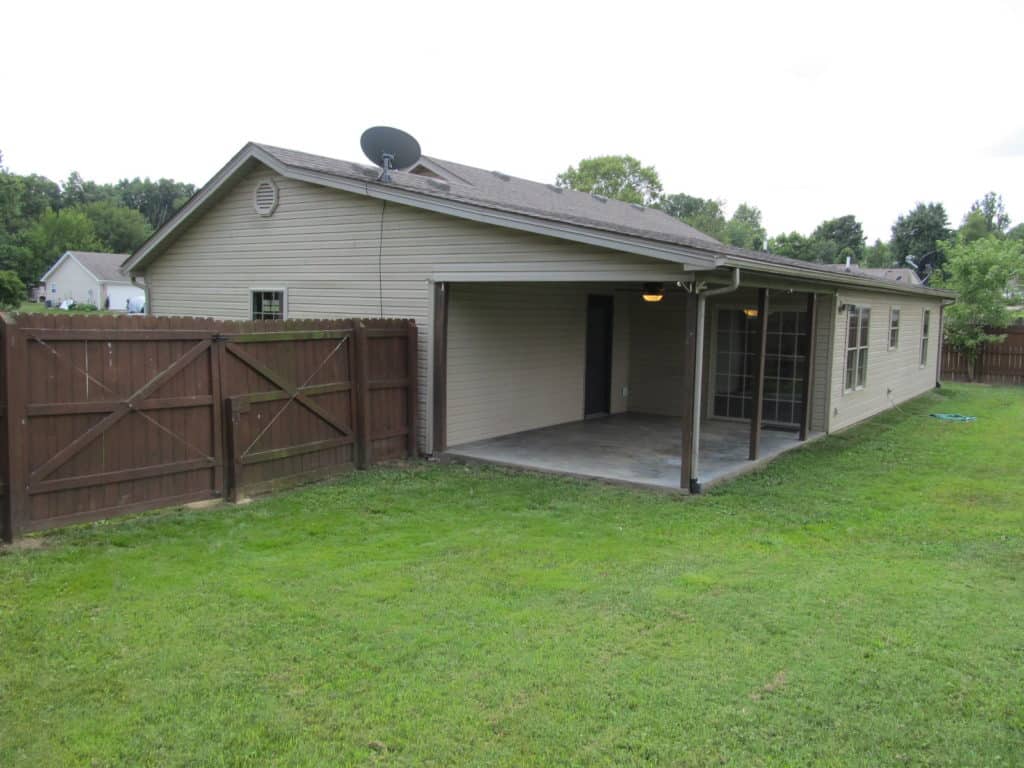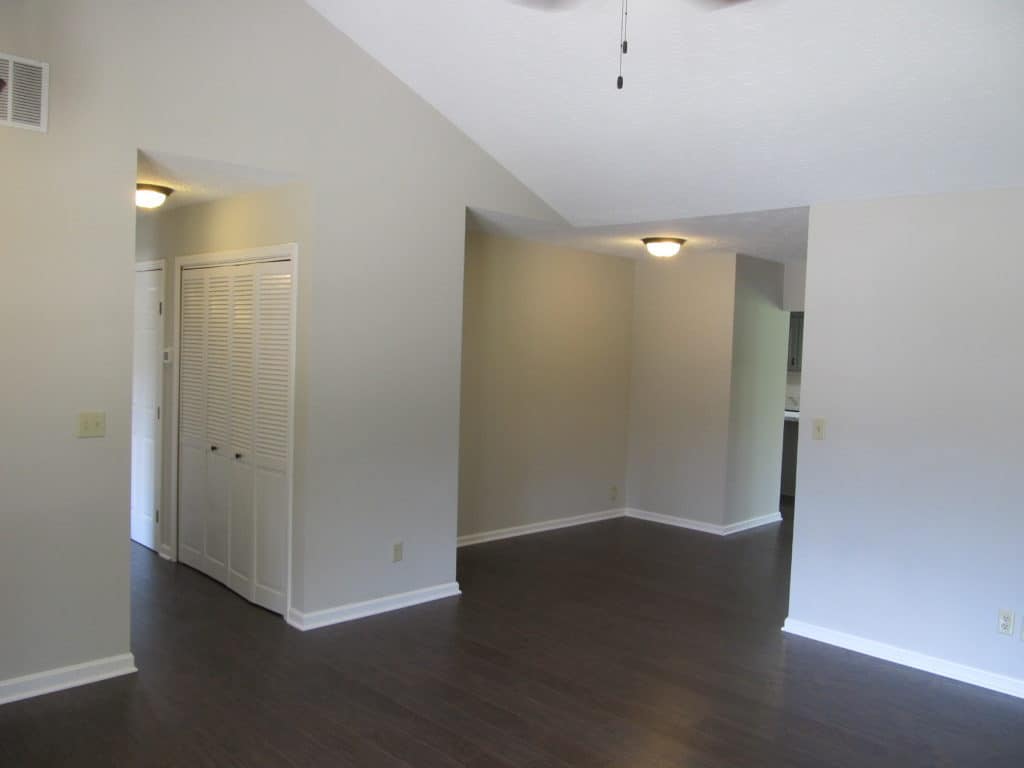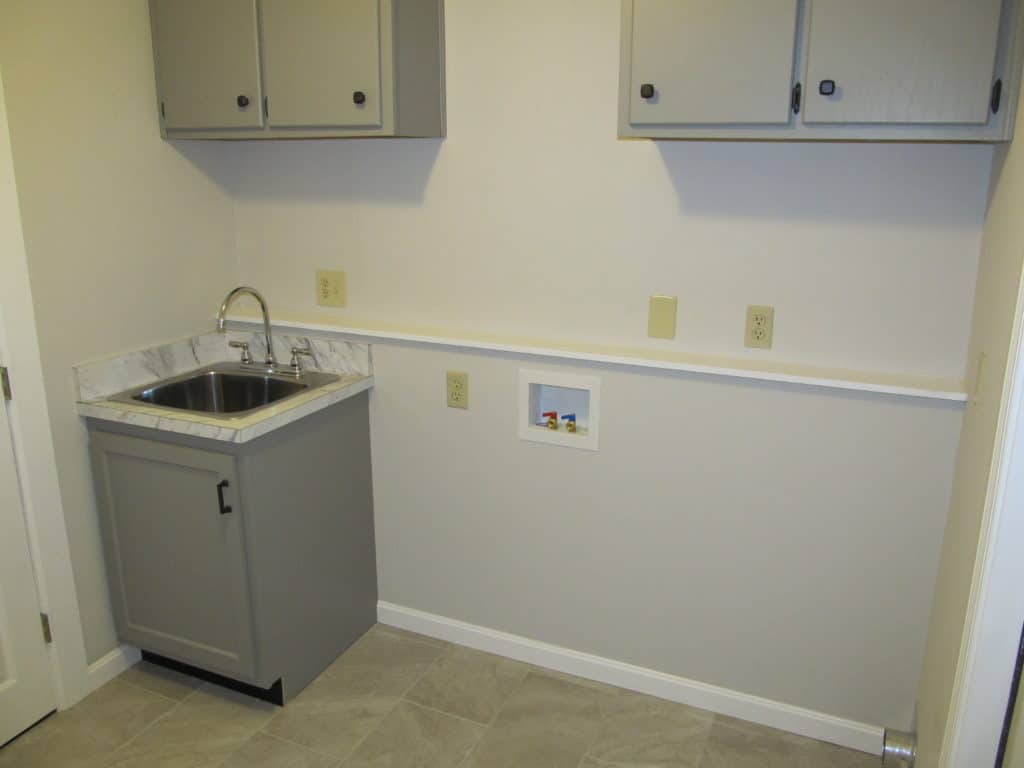So you’ve been thinking about flipping houses for a while now but before you take the plunge into house flipping you’re trying to figure out how many houses can you flip in a year?
How Many Houses Can You Flip In A Year?
In general, there is no limit to the number of houses you can flip in a year. However, from a practical and logistical standpoint, the average full-time house flipper can expect to flip somewhere between 2 and 7 houses a year.
You might be wondering why there is such a large range when it comes to the average number of houses you can flip in a year.
The truth of the matter is it’s hard to pin down an average number of houses a full-time house flipper can flip because there are so many different variables and strategies for flipping houses.
In reality, full-time house flippers flip 1 to over 20 houses a year but 2 to 7 is just a good range for those extremes.
Speaking for myself as a full-time flipper I usually flip between 2 and 4 houses a year.
So why does the number of houses you can flip in a year vary so wildly between house flippers? We will examine this in detail below.
Limiting Factors on the Number of Houses You Can Flip
In a perfect house-flipping world, there would be endless flips, resources, time, and money.
However, in reality, we all realize this is not the world we live in.
The fact of the matter is the average house-flipper does not have endless resources or money which ultimately puts a cap on the number of house flips they can complete in a year.
Capital and Money or the Lack There Of
Perhaps one of the biggest limitations to the average house-flipper, especially those just starting out, is the amount of capital or money they have at their disposal.
Capital is the lifeblood of any flipping business as it’s required throughout all phases of the house flipping process from the acquisition of the property to the rehab to finally the carrying costs of the home until it sells.
Let’s say you have access to $200,000 in flipping capital whether that’s from cash, hard money loans, or private money. If you purchase a home for $100.000 and spend $50,000 on the rehab you have pretty much tapped out your ability to buy another flip until the current one sells.
So considering the fact that an average flip takes between 4 to 6 months to complete, in this example, you would not be able to flip more than 2 to 3 houses a year.
Finding Properties to Flip
Another major limitation on the number of houses you can flip in a year is the number of houses you can find that make sense to flip.
Now, this can vary somewhat from market to market but in general, it’s not easy finding properties that make a good flip, especially in really hot real estate markets.
The fact of the matter is the majority of real estate that exists in any given market for sale will not make a good house flip.
There can be many reasons why a particular house doesn’t make a good flip but some of the top reasons would be the property is priced too high, the home is located in a bad area, the property would require too much money to update, and repair or a combination of all the above.
So even if you have unlimited resources, time, and money if you can’t find the houses to flip those things are pretty irrelevant.
Speaking from my own experience I can usually find 10 to 20 houses a year that I think would make a good flip but just because I found it doesn’t necessarily mean I will end up with it.
Which leads to the next major limitation: competition.
House Flipping Competition
While we might wish sometimes that we lived in a vacuum, as with any type of business there will always be competition to contend with and this is certainly true when it comes to flipping houses.
As mentioned above I probably find at least 10 to 20 houses a year that would potentially make a good flip but I don’t always end up with them because of competition in the house flipping world.
If you’re new to house flipping you will find out pretty quickly that there is a lot of competition when it comes to flipping houses and just buying real estate in general.
The next thing you will realize is that competition can come in all shapes and sizes.
Different Types of Competition
When you’re going after a house to purchase as a flip, you will be going up against not only other seasoned house flippers but also regular retail buyers as well as other types of real estate investors that might be looking for a rental.
The number one reason I get beat out by the competition when trying to buy my next house flip is the price.
When buying real estate every one has a price that makes sense to them for varying reasons.
And oftentimes other types of buyers are willing to pay more for the house than I am because their reasons for buying the home are different than mine.
For example, a retail buyer that is planning on moving into the home to live in will almost always pay more for the house than I will, because their reason for buying the house is different than mine.
As I need to purchase the home cheap enough to allow money for the rehab and to make a profit they are often buying the home for more emotional and practical reasons such as they love the home or they need a place to live.
And even if the home is too rough or beat up for retail buyers, I still might lose out on the home.
Because I’m still competing against other investors that might be willing to pay more for the house than I am.
The Time it Takes to Flip a House
As mentioned above on average it takes about 4 to 6 months to flip a house from the time you purchase the home until you sell it. So by doing the math on this, if you flip 1 house at a time you will flip on average between 2 and 3 homes a year, if you flip 2 houses at a time on average you will flip between 4 and 6 houses a year, and so on.
The reality is that we all only have so many hours in the day which puts a limit on the number of houses that we can flip realistically in a year.
Oftentimes new or would-be house flippers will severely underestimate the amount of time it takes to flip a house. In fact, until you have flipped your first house it’s hard to understand just how long each step really takes especially when it comes to the rehab of the property.
While speed is the name of the game when it comes to house flipping in reality rehabbing a house takes a lot of time and effort, and you will almost certainly hit road blocks and face delays while flipping houses.
Because of all of this, time can have one of the biggest impacts on the number of houses that you can flip in a year.
Flipping Houses and the Local Real Estate Market
Some factors that impact the number of houses that can be flipped in a year can be controlled by a house flipper, but when it comes to the local real estate market, in general, a house flipper has little to no control.
While a house flipper can have a strategy in place to try and work successfully within their local real estate market, the current condition and status of their local market can have a huge impact on the number of flips they can complete within a year.
For example, in a really hot real estate market, a house flipper may be able to sell a flip within 24 hours of putting it on the market for sale but might struggle to find houses to flip because there is so much competition for houses.
On the flip side in a slow or cold real estate market a house flipper might be able to find plenty of houses to flip but their flips languish for sale on the market for months or more while waiting for a buyer, tying up their flipping capital for long periods of time.
But regardless of the real estate market, the house flipper is in, it’s easy to see how either scenario can have a substantial impact on a house flipping business and the number of houses that can be flipped in a year.
How to Increase the Number of Houses Flipped in a Year
While there certainly are limiting factors when it comes to the number of houses that a house flipper can perform in a year.
The good news is that there are many things that a house flipper can do to increase that number.
Locate and Find More Capital for House Flipping
One of the best ways to flip more houses in a year is to find additional capital for your house flipping business. Thereby allowing you to flip more houses at the same time.
Remember there’s always capital out there if you’ve found a good piece of real estate that can be flipped.
In order to find more capital for your house flipping business, you might have to consider alternative sources of capital such as taking on a partner, private money, or hard money loans. Just remember that there are unique risks and costs to every type of capital so it’s important to fully understand the true costs of the money and the deal you are making for that capital.
Have Multiple Sources for Potential Flips
If you’re relying on only one source of property for your house flipping business you are severely limiting the number of flips that you will be able to complete. A seasoned house flipper always has multiple sources for property in order to maximize the number of flips they can complete in a year.
Some good sources for property to flip include wholesalers, the MLS, auctions, sheriff sales, FSBO’s, estate sales, etc…
There really is an endless amount of potential sources for houses to flip, the only real limitation is your imagination in finding them.
Hire More of the Work Out
One of the biggest time consumers when flipping houses is often the actual rehab of the property. So it stands to reason that if you can speed up the rehab process on a house it will allow you to flip more houses faster.
One of the best ways to speed up the rehab process on a house flip is to hire qualified workers and subcontractors to complete more of the rehab work.
While you will be giving up some of the potential profit for the flip by hiring more work out instead of completing it yourself.
You should be able to more than makeup for that loss in profit by being able to complete more flips a year.
 Streamline the House Flipping Process
Streamline the House Flipping Process
While no two house flips are ever the same remember that house flipping is a process that can be broken down into standardized and repeatable steps.
When flipping houses don’t try to reinvent the wheel for each flip. Find a process and a system that works when flipping houses and stick with it.
The better and more proficient you become at the house flipping process the faster and easier house flipping becomes.
Price Your Flips Competitively In the Market
The last on the list for ways to increase the number of houses that can be flipped in a year is to price your house flips competitively in the market.
While house flips might be able to demand a bit of premium in the real estate market because they typically have been updated and redone. It’s important to not get greedy when it comes to listing your flips for sale.
If you are too greedy or overshoot the market price of the home by too much when pricing your home you will often end up with long days on the market and a slow and arduous selling process.
When flipping houses a much better strategy when selling your flips is to price your home competitively in the market which will usually lead to a quicker sale, thereby freeing you and your capital up for your next flip sooner.
Looking for even more information on flipping houses? A great book that really helped me out when I was first starting out was “Flip: How to Find, Fix, and Sell Houses for Profit” by RIck Villani and Clay Davis. You can check it out on Amazon by clicking here.
Recent Posts
Your bedroom is more than just a place to sleep; it's a personal sanctuary where you can unwind, relax, and recharge after a long day. Whether working with a small bedroom or a spacious suite,...
Are you ready to breathe new life into your living room? If so, look no further than modern living room colors, as they can transform your space from drab to fab. As the heart of the home, the...







